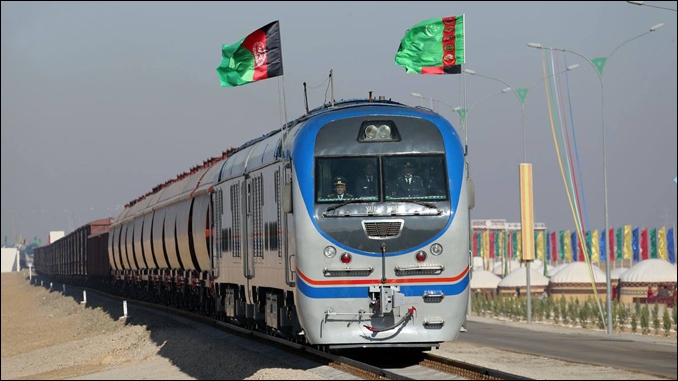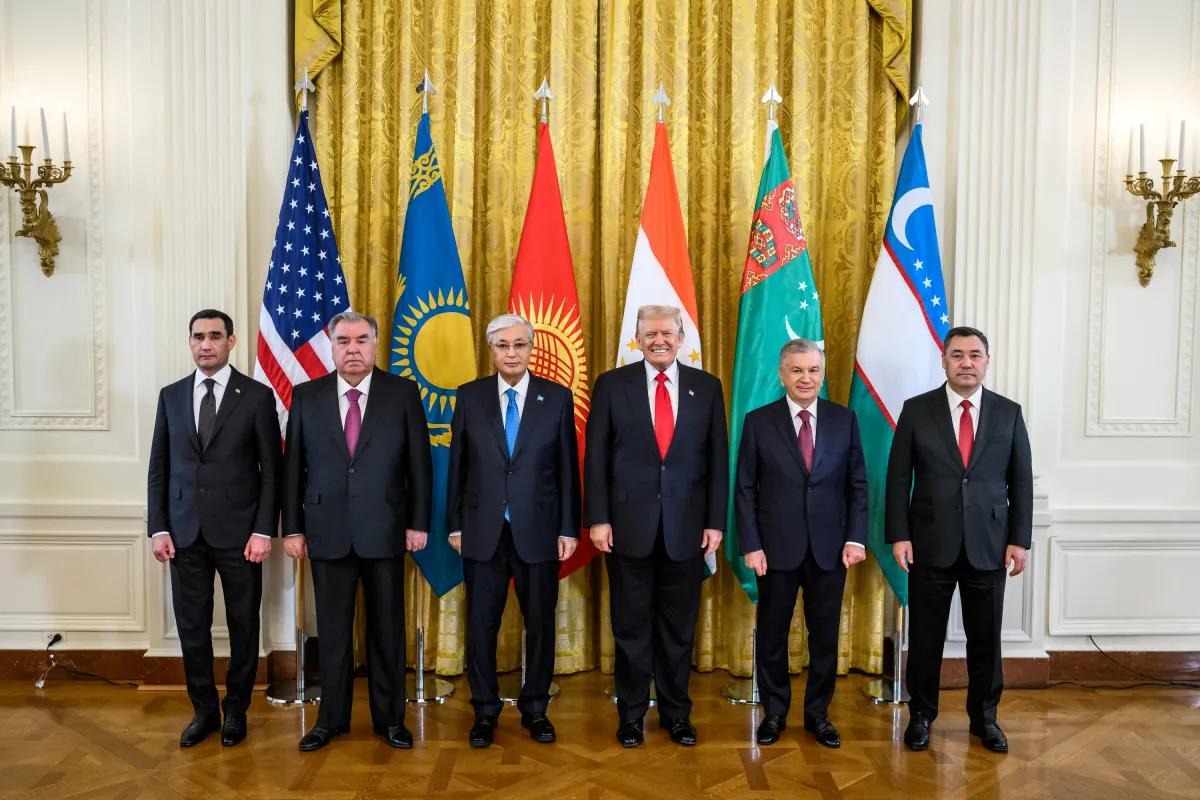
Russia Seeks to Extend Transport Routes to Afghanistan
Russia Seeks to Extend Transport Routes to Afghanistan
Executive Summary:
- Western sanctions against Russia have hampered northern cargo transportation routes used by most Eurasian states, leading Russia to increase relations with the Taliban government on transport communications to connect to the South Asian market.
- Extending the International North-South Transport Corridor to Afghanistan and Pakistan will be beneficial for Moscow in avoiding the consequences of the escalating military conflict in the Middle East, which could involve Iran.
- Russia’s participation in the development of trans-Afghan communications could lead to a conflict of interests between the Central Asian states implementing their own transport projects in partnership with the Taliban.
On November 25, 2024, Russian Security Secretary Sergei Shoigu met with Afghanian Deputy Prime Minister Abdul Ghani Baradar. The parties discussed the construction of the Trans-Afghan Railway to Pakistan, which Russia views as part of its flagship project, the International North-South Transport Corridor (INSTC) (Interfax, November 26, 2024). Western sanctions against Russia due to its war in Ukraine have hampered the operation of northern cargo transportation routes used by most Eurasian states. This increased the importance of the southern transit direction. Afghanistan may be one of the beneficiaries of this, along with some Central Asian countries, Iran, and Pakistan, due to its convenient geographical location.
Since regaining power, the Taliban has resumed almost all previously announced regional and interregional transport projects and proposed new ambitious initiatives. In July 2024, Kazakhstan, Turkmenistan, and Afghanistan discussed the construction of the Torghundi-Herat-Kandahar-Spin Boldak railway spanning from the Turkmenistan border to Pakistani ports in the Indian Ocean (see EDM, July 10, 2024; The Times of Central Asia, July 22, 2024). The new route is projected to be an alternative to the Kabul Corridor (Termez-Mazar-i-Sharif-Kabul-Peshawar railway). Competition between them is inevitable, but it is more likely to have a positive effect. The launch of additional trade routes through Afghanistan will lead to cheaper transportation costs, which will benefit their profitability. This will stimulate the interest of external actors, including Russia, in the development of trans-Afghan communications.
Russia connects the extension of Afghanistan’s transit capabilities to the INSTC. This international transport corridor has three transit routes: western, which goes through Azerbaijan; trans-Caspian; and eastern, which goes through Kazakhstan and Turkmenistan. The fourth branch of the INSTC, from Moscow’s position, should be formed by railway arteries running through Afghanistan toward Pakistan.
The extension of the INSTC to Afghanistan and Pakistan will be beneficial for Russia amid the escalation of the military conflict in the Middle East. This conflict could involve Iran, which is a vital link in the complex supply chain between India and Russia (see EDM, July 13, 2022). The potential for increased tension in the Persian Gulf and the Strait of Hormuz, where Iranian ports are located, increases the attractiveness of the Afghan-Pakistani direction of the INSTC.
Notably, Uzbekistan instigated the idea of creating a transport corridor along the North-South axis toward ports in Pakistan, which is now considered the fourth (southern) transit branch of this project. In 2022, Tashkent proposed launching the 5,532-kilometer (3,437-mile) multimodal route Belarus-Russia-Kazakhstan-Uzbekistan-Afghanistan-Pakistan-ports on the Indian Ocean (see EDM, October 26, 2022; Uzbekistan Daily, November 26, 2022). A year later, the parties signed a memorandum on its implementation (Yangi Oʻzbekiston, November 2, 2023). This new route will allow goods to be delivered from northern Eurasia to South Asia in 20 days. This would be an effective replacement for trade routes through the Black, Mediterranean, and Red seas, which have become unsafe amid the war in Ukraine and Israel’s escalating conflict in Gaza.
Moscow has expressed support for the construction of both the Western (from the border of Turkmenistan) and Eastern (from the border of Uzbekistan) trans-Afghan railway (Interfax, November 26, 2024). This will allow Tashkent and Ashgabat to attract more transit cargo, increasing the economic attractiveness of their flagship transport projects involving Afghanistan.
Despite the broad prospects for a transport connection with Pakistan via Central Asia and Afghanistan, Moscow is developing other alternatives for entering the South Asian market. By March 2025, Russia plans to launch container trains to Pakistan on the INSTC via Kazakhstan, Turkmenistan, and Iran (Mehr News Agency, December 5). The proposal of a branch from the Iranian transport network toward Pakistan, which has long had a railway connection, was discussed in detail during Russian-Pakistani talks on December 3, 2024, in Moscow (Russian Transportation Ministry, December 4, 2024). This route will compete with the newly emerged transport corridor Belarus-Russia-Kazakhstan-Uzbekistan-Afghanistan-Pakistan-ports on the Indian Ocean. To avoid losing transit flows, Tashkent needs to expedite the construction of the Kabul Corridor (Afghanistan International, April 26, 2024). Laying the first section of the route from Naibabad to Puli Khumri using its own funding could help attract potential investors for the new railway and, simultaneously, give impetus to the development of the southern route of the INSTC through Uzbekistan and Afghanistan.
In an aim to diversify trade routes oriented to the East, Russia has also begun to look at the potential of the Southern Corridor of the Trans-Asian Railway in the Pakistan-Iran-Türkiye direction, which China has been actively restoring in recent years as part of the One Belt-One Road initiative (see EDM, November 17, 2017). In December 2021, the Istanbul-Tehran-Islamabad freight train service was resumed after a ten-year hiatus (RailFreight.com, December 22, 2021). This route will become an important element of the New Silk Road and significantly strengthen the position of land routes in the international freight transportation system.
A flagship project of the One Belt-One Road initiative is considered to be the China-Pakistan Economic Corridor (CPEC), which envisages, among other things, the construction of a railway from the Chinese city of Kashgar to the Pakistani port of Gwadar on the Arabian Sea (Railway.supply, May 1, 2023). The route will be about 3,000 kilometers (1,864 miles) long and eventually be connected to railway networks in Iran and Türkiye, connecting China to Europe. Moscow will likely not take issue with such a multi-layered combination of routes, given the planned creation of the China-Mongolia-Russia Economic Corridor (CMREC) (Russian Ministry of Economic Development, June 23, 2016). Russian cargo can be transported to Pakistan and beyond using CMREC and CPEC infrastructure if necessary. The route from Russia to Pakistan via China, however, will undoubtedly be long, difficult and expensive, likely making it a backup option.
Russia has been searching for new export markets and trade routes to save its own economy amid Western sanctions and rising tensions in the Middle East. Transportation via Afghanistan toward South Asia appears to be a feasible alternative to Europe. By actualizing the southern direction of transit, Moscow is increasingly forced to turn to the transport services of the Central Asian republics, giving them leverage over Russia. Simultaneously, Russia’s participation in the development of trans-Afghan communications may lead to a conflict of interest of other involved parties, primarily the Central Asian states. As a precaution, it is important for the five republics in Central Asia to achieve synergy in the implementation of transport routes passing through Afghanistan and to establish mutually beneficial cooperation in this issue.


